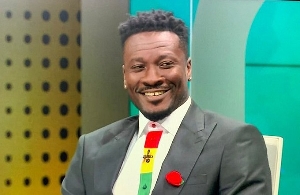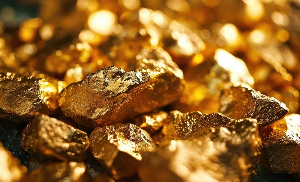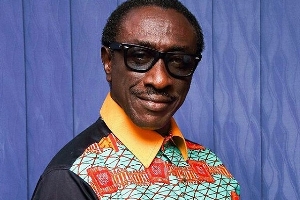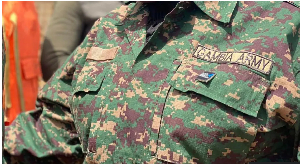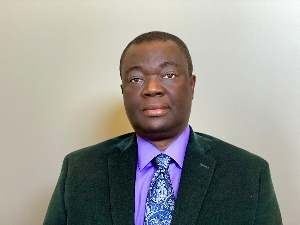The head of a Ghanaian king executed by Dutch colonists in the 1830s is to be returned to its homeland for burial, say authorities in the Netherlands.
Badu Bonsu II, king of the Ahanta Traditiona Area in the Western Region, is believed to have been decapitated in retaliation for the killing of two Dutch emissaries.
The Leiden museum, which has been storing the head, said it hoped it could now have a dignified burial.
Ghana had said the king would not be at rest if the head remained where it was.
King Bonsu is thought to have been executed after the two officials were killed during a rebellion against European rule in the country, hanging their heads on his throne as a trophy.
At some point, the king's head was taken from Ghana to the Netherlands, and has been kept in a jar of formaldehyde at the Leiden University Medical Centre ever since.
Author Arthur Japin told Dutch media last year that he once saw the head while researching a historical novel.
"He's got a little ring beard, his eyes are closed as if he's sleeping," said Mr Japin.
"My first thought was, this is not fitting."
After hearing of the head's location in 2008, Ghana filed a request for its return, saying if it remained unburied the king would be incomplete and therefore "hunted in the afterlife".
'Good thing'
Now, a Dutch culture ministry spokesman has said the museum has decided to "restore the head to Ghana" as a matter of dignity.
"This is a king," Freek Manche told the AFP news agency, emphasising its importance.
The museum said in a statement that officials had been in contact with Ghana to arrange for the careful return of the preserved head.
They said they had not allowed any photographs to be taken out of respect for the human remains.
The BBC's Will Ross in Accra says respect for the dead has huge cultural significance in Ghana.
Ghanaian historian Prof Addo-Fening told the BBC that the museum's decision was "very, very important".
"When people die and their bodies are not found and buried, it leaves a lingering fear that they will not find rest with their ancestors until this is done," he said.
"As he was a king, putting his head on display would amount to some form of humiliation for his people - but they now have an opportunity to show some reverence to their late king before they bury him."
"I imagine that this will be a a good thing for the psyche of the community," he said.
Museum spokesman Marleen van't Oever told AFP that no date had yet been arranged for the return but it was "likely to be in the long term".
The museum's move follows decisions by other western museums to return items taken during colonial times or explorations.
In 2006, the University of Aberdeen in Scotland returned to New Zealand the preserved heads of nine tattooed Maori tribesman seized in the 19th Century.
The same year, Britain's Natural History Museum returned the remains of 18 indigenous people taken from Australia.
General News of Saturday, 21 March 2009
Source: BBC


